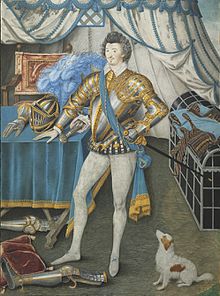




Sir Anthony Mildmay (died 1617) of Apethorpe Palace, Northamptonshire, served as a Member of Parliament for Wiltshire from 1584 to 1586 and as English ambassador in Paris in 1597.





Sir Anthony Mildmay (died 1617) of Apethorpe Palace, Northamptonshire, served as a Member of Parliament for Wiltshire from 1584 to 1586 and as English ambassador in Paris in 1597.
Mildmay was the eldest son of Sir Walter Mildmay (d.1589) of Apethorpe, Chancellor of the Exchequer to Queen Elizabeth I and founder of Emmanuel College, Cambridge, by his wife Mary Walsingham, a sister of Sir Francis Walsingham. [1]
He was educated at Peterhouse, Cambridge, [2] and delivered an oration with much success when Queen Elizabeth I visited the College on 9 August 1564. [3] He entered Gray's Inn in 1579. [4] He served as Sheriff of Northamptonshire for 1580 and 1592. He was a Member of Parliament for Newton in Lancashire, in 1571, and for Wiltshire from 1584 to 1586. [2] and for Westminster in 1597.
He was knighted in 1596, when he was appointed as Ambassador to France during the reign of King Henry IV of France. "I always knew him," wrote Chamberlain soon after Mildmay had settled in Paris, "to be paucorum hominum, yet he hath ever showed himself an honourable fast frend where he found vertue and desert". [5] The French King complained of Mildmay's ungenial manner and of the coldness with which he listened to the praises of Robert Devereux, 2nd Earl of Essex. At an interview in March 1597 Henry ordered him out of his chamber and threatened to strike him. [6] He returned home later in the year, and declined an invitation to resume the post in 1598. [1]
In 1567 he married Grace (d. 27 July 1620), a daughter and co-heiress of Sir Henry Sharington (or Sherington) of Lacock Abbey, Wiltshire, by whom he left an only child and heiress:
He died on 11 September 1617 and was buried in St Leonard's Church, Apethorpe, where his elaborate marble monument with recumbent effigies of himself and his wife survives. [7] His portrait survives at Emmanuel College, Cambridge.

Sir Walter Mildmay was a statesman who served as Chancellor of the Exchequer to Queen Elizabeth I, and founded Emmanuel College, Cambridge.

Earl of Westmorland is a title that has been created twice in the Peerage of England. The title was first created in 1397 for Ralph Neville. It was forfeited in 1571 by Charles Neville, 6th Earl of Westmorland, for leading the Rising of the North. It was revived in 1624 in favour of Sir Francis Fane, whose mother, Mary Neville, was a descendant of a younger son of the first Earl. The first Earl of the first creation had already become Baron Neville de Raby, and that was a subsidiary title for his successors. The current Earl holds the subsidiary title Baron Burghersh (1624).

Apethorpe is a village, civil parish, former manor and ecclesiastical parish in Northamptonshire, England, situated 11 miles west of the City of Peterborough. The 2001 census records a population of 130, increasing to 160 at the 2011 census. The manor of Apethorpe is recorded in the Domesday Book of 1086 as Patorp. The village is compact, uniform and centred on Main Street. In the late 15th century the manor of Apethorpe was acquired by Sir Guy Wolston, an officer in the household of King Edward IV, who began the construction of the surviving Apethorpe Palace.
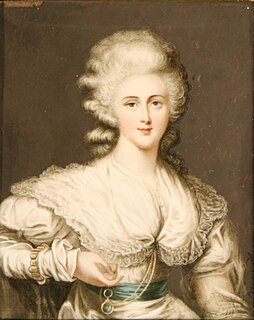
Sarah Anne Fane, Countess of Westmorland was an English noblewoman.
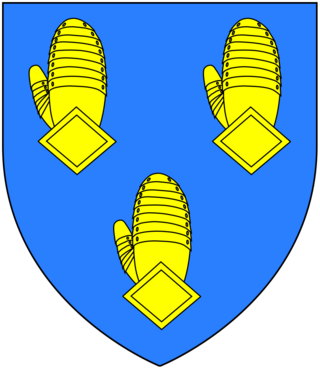
John Fane, 7th Earl of Westmorland, styled The Honourable John Fane from 1691 to 1733 and Lord Catherlough from 1733 to 1736, of Mereworth Castle in Kent, was a British Army officer and politician who sat in the House of Commons in three separate stretches between 1708 and 1734.
Colonel George Fane was an English politician who sat in the House of Commons at various times between 1640 and 1663. He was Lord of the Manor of Hunningham. He fought in the Royalist army in the English Civil War.
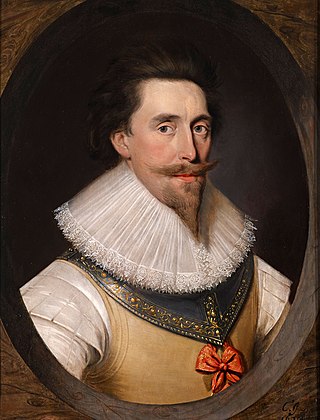
Francis Fane, 1st Earl of Westmorland, of Mereworth in Kent and of Apethorpe in Northamptonshire was an English landowner and politician who sat in the House of Commons between 1601 and 1624 and then was raised to the Peerage as Earl of Westmorland.

Mildmay Fane, 2nd Earl of Westmorland, styled Lord le Despenser between 1624 and 1628, was an English nobleman, politician and writer.

Apethorpe Palace in the parish of Apethorpe, Northamptonshire, England, is a Grade I listed country house dating back to the 15th century and was a "favourite royal residence for James I". The main house is built around three courtyards lying on an east–west axis and is approximately 80,000 square feet in area. It is acknowledged as the finest example of a Jacobean stately home and one of Britain's ten best palaces. The building's successive alterations are attributed to three major architects: John Thorpe (1565-1655) for the Jacobean royal extension, Roger Morris (1695-1749) for the Neo-Palladian modifications, and Sir Reginald Blomfield (1856-1942) for the formal gardens and the Neo-Jacobean embellishments. The Lebanese cedar planted in 1614 is a scheduled monument considered to be the oldest surviving one in England.

Fulbeck is a small village and civil parish in the South Kesteven district of Lincolnshire, England. The population taken at the 2011 census was 513. The village is on the A607, 9 miles (14 km) north from Grantham and 8 miles (13 km) north-west from Sleaford. To the north is Leadenham, and to the south, Caythorpe.
Fane is an English surname of Welsh origins that belongs to a family who have produced a number of notable members. The family originated with Ivon Vane, who was a Welsh landowner and mercenary captain in the service of the Black Prince. Ivon Vane or John Fane, as he was known in English, was one of three captains who captured King John II of France at the battle of Poitiers 1356. He was knighted and shared in the ransom monies, which made him very wealthy. He settled in Kent and founded the two notable families of Fane, whose members became the Earls of Westmoreland, and Vane, who became the Earls of Darlington. Both families have golden gauntlets on their crest in memory of the surrender of King John.
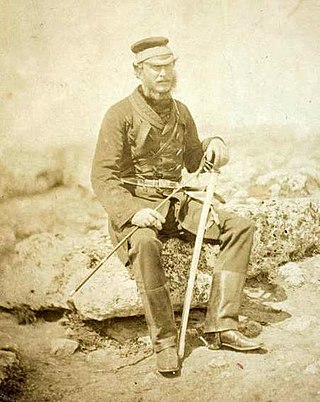
Colonel Francis William Henry Fane, 12th Earl of Westmorland CB, DL, styled Lord Burghersh between 1851 and 1859, was a British Army Officer and racehorse owner.

Vere Fane, 4th Earl of Westmorland, styled The Honourable Vere Fane from 1644 to 1661 and Sir Vere Fane from 1661 to 1691, was a British peer and Member of Parliament for Peterborough and twice for Kent.

Charles Fane, 3rd Earl of Westmorland, styled Lord le Despenser between 1626 and 1666, of Apethorpe Hall, Northamptonshire was a British peer and twice Member of Parliament for Peterborough.

Lieutenant-Colonel Anthony Mildmay Julian Fane, 13th Earl of Westmorland, CBE, JP, styled Lord Burghersh between October 1859 and 1891, was a British peer.
Fane is a surname.
Grace Mildmay was an English noblewoman, diarist and medical practitioner. Her autobiography is one of the earliest existing autobiographies of an English woman. Originally from Wiltshire, she married Sir Anthony Mildmay in 1567 and moved to Apethorpe Palace, his father's home in Northamptonshire. She practised medicine on her family and others, with an extensive knowledge of medical theory, and a large repertoire of cures. Her writings included memoirs, medical papers and devotional meditations.
Sir Michael Sondes of Throwley, Kent, was an English Member of Parliament.

Rachel Bourchier, Countess of Bath, wife of Henry Bourchier, 5th Earl of Bath (1587-1654), was an English noblewoman and writer, best known for her activities during the English Civil War.

Mary Fane, Countess of Westmorland continued her mother Grace Mildmay's interest in physic and was a significant author of spiritual guidance and writer of letters.